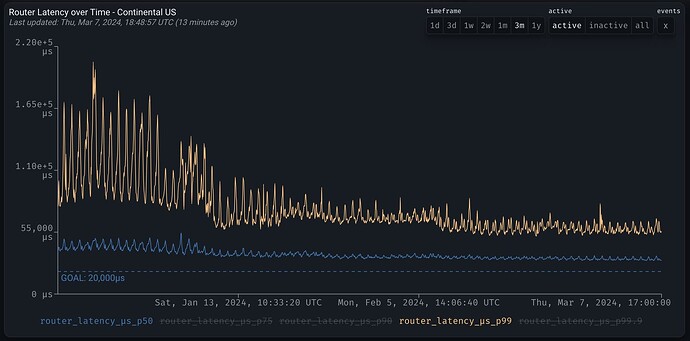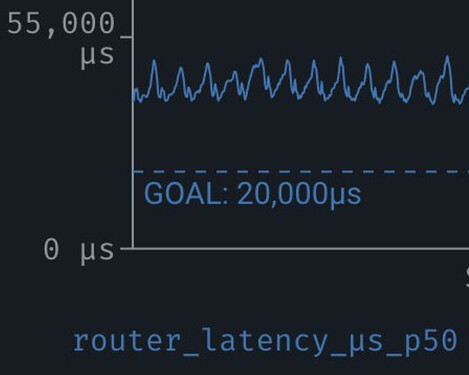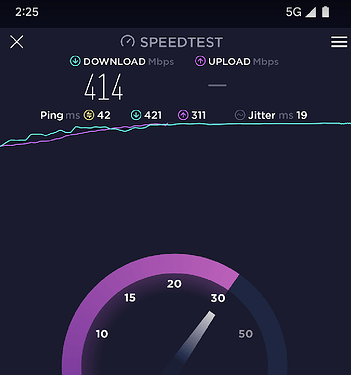One very interesting (to us) tweet flew by and was buried in the noise of the Internet last week.
Starlink is focusing on “network performance with the goal of < 20ms latency”
As per the tweet and the embedded graph we can see the team “reduced median and worst-case latency for users around the world.”
Observations and Lessons
-
In the spirit of “you can manage only what you measure” the team has indeed done a great job of gathering & aggregating the latency data and showing the goal (dotted line of 20ms)
-
The p55 router latency seems to be plateauing around 40ms. Note that 5G + LTE networks hover around 4ms and the mmWave (such as Verizon’s UWB) hover around 20ms. We’ve seen mmWave get as low as 10ms in ideas scenarios, such as close proximity to the antenna (meters vs kilometers), no congestion, no interference etc. So the question we ask ourselves - is it possible for a satellite 550 kilometers above earth to get lower ping latency compared to a terrestrial network?
- Corollary: is the 20ms possible given the laws of physics as we know them here on Planet Earth
Facts
-
1 Kilometer is equal to 1000 meters. Meters is the SI base unit of length. The prefix kilo, abbreviated “k”, indicates one thousand. 1 km = 1000 m. (source)
-
1 Light second is equal to 299 792 458 meters (SI unit). Distance light travels in a vacuum in one second. (source)
Conclusion
So then for a packet to travel 550 kilometers up from the ground to the Starlink satellite and then back down to the ground station it would travel a total of over 1,000 Kilometers. Converting that to Light Seconds it would be approximately 0.0033 seconds of travel time. So it seems to us that if it takes the light close to 4ms to travel 1000km in vacuum, then 20ms from the Earth surface to Starlink satellite at 550km LEO orbit may indeed be possible.
We look forward to what further improvements the Starlink team would make to the system to shave an additional 10ms from the current 40ms as shown in the graph above.


